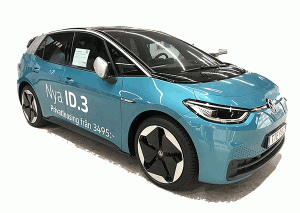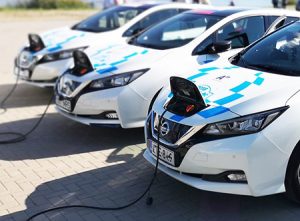By Jo Nova
Yet another reason EV’s are a lousy way to “save the world”
The point of all the subsidies, the charging sites, the $3,000 parking fines, the extra generation, interrupted journeys, pot-holes, road-wear, tyre pollution, collapsing parking lots and random fires is supposedly so that we make the weather nicer by burning less fossil fuels. But in Norway where the biggest experiment in EV’s has produced an “idyllic” mass uptake of EV’s, the fuel use has hardly changed.
Rystad Energy says that this shows we *must* electrify the buses, tractors and trucks too, but really this just shows what a waste of money all the past subsidies were.
If the “low hanging fruit” subsidies didn’t achieve much, the next round of subsidies will have to waste stupendous amounts of money. Remember this doesn’t include fuel used to power the electricity cars, nor the fuel used to mine the lithium and build the EV, or to fill in the potholes and rebuild the bridges. No one even knows if EV’s will reduce carbon dioxide. “There’s no such thing as a zero emissions vehicle”.
This is just “road fuel” we’re talking about and it’s not reducing it much:
Is Norway’s Love For EVs Enough To Put A Dent In Fuel Demand?
By Rystad Energy – Aug 28, 2023, 9:00 AM CDT, OilPrice.com
Although EVs make up about 90% of all new car sales in Norway, fuel demand has only seen a 10% fall from 2017 to 2023, remaining relatively stable.
Road fuel demand in Norway has remained relatively stable even with soaring electric vehicle (EV) adoption, raising questions about whether EVs really have a material impact on diesel and gasoline sales. Rystad Energy research and modeling has, however, uncovered the truth behind the persistent sales – electrifying heavy-duty vehicles, especially trucks, is essential to lowering overall fuel consumption.
EVs are often positioned as the key to decarbonizing transportation, but the latest data from the Norwegian government suggests otherwise. Electric cars have accounted for at least 80% of all passenger vehicle sales for the past three years. EVs – including plug-in hybrid (PHEV) and battery electric vehicles (BEV) – accounted for about 90% of all new car sales in 2023. More than 50% of passenger cars on the road in Oslo are electric, a threshold that BEVs alone will pass 50% in the next two years.
As far as experiments go, if anyone cared about CO2 emissions — the Norwegian EV program is a fail.
 Drilling into the details, you might assume that Norwegians have used EV’s for the only bearable outcome they could find, which was short trips that didn’t use much fuel, which is why they didn’t make much difference. But Rystad Energy claims people drive the average BEV slightly further than the average diesel.
Drilling into the details, you might assume that Norwegians have used EV’s for the only bearable outcome they could find, which was short trips that didn’t use much fuel, which is why they didn’t make much difference. But Rystad Energy claims people drive the average BEV slightly further than the average diesel.
Since 2018, the average BEV in Norway has driven more miles than passenger cars of any other fuel type. In 2022, the average BEV drove 12,950 kilometers (km), surpassing for the first time the average distance of 12,000 km for diesel passenger vehicles. Overall, average passenger vehicle travel has steadily declined in Norway, from about 13,800 km in 2007 to 11,100 km in 2022.
They looked at official fuel sales, annual average mileage and car sales as reported by Statistics Norway and estimate that passenger car fuel demand is down 20%, which is “in line with the BEV market penetration”, which it might be, but it’s still a big nothing in terms of stopping storms, floods and fires. No jet streams were altered by this experiment.
Other factors confounding the experiment is that fuel demand from buses and trucks has grown from 30,000 barrels per day to 32,000. Plus the population grew, and people own slightly more cars per capita. (We all know EV’s are more likely to be the second car?) There are so many moving variables here — do governments that push EV’s onto the population also increase immigration thus undermining their own emissions reductions efforts? (Yes they do, and all the time). Are the populations that buy EV’s so wealthy they can afford the luxury of a second car? Does the increase in fuel prices (which was driven by green policies) mean more people catch buses and order online now, so instead of driving to the store, big diesel trucks now deliver their parcels?
Rystad Energy have a very long explanation of why really the fuel savings from EV’s are “just around the corner” — like everything else in Transition-World.
If politicians and activists actually cared about CO2, they wouldn’t be doing this.
Image by Nerijus jakimavičius and Vogler
